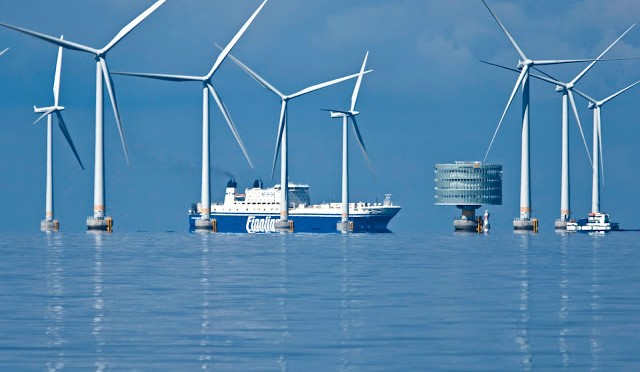The North Sea has provided a favorable environment for the design of the world’s first offshore wind turbines. Its southern part enjoys an excellent wind regime and shallow waters. Public policies have gradually encouraged the development of this sector in Germany, Belgium, Denmark, the Netherlands and the United Kingdom. By the end of 2017, these countries had 15.5gigawatts (GW) of installed capacity, or 82% of the world’s offshore wind power. Outside Europe, only China had a significant fleet at that date, with 2.8 GW in service, or 15% of global capacity.
European industrial players have been able to preserve this market for their products and services, sometimes at a high price, with two manufacturers supplying 84% of installed turbines, for example. The know-how acquired puts European operators in a good position to penetrate the global market. They have already had some success, especially in Taiwan. However, the competition is only beginning, with many non-European groups, especially Chinese, challenging the European pre-dominance.
Those groups have taken stakes in the North Sea projects, acquiring the necessary skills to spread to other shores. The shallow depth of the continental shelf, specific to the North Sea, has led project developers to favor installations constructed on various types of foundations. But these are hardly adapted to many oceanic areas that are much steeper near the coasts, where floating wind technology would prove to be much better.
Around the North Sea, support policies for offshore wind industry have evolved, partly under the influence of the European Commission, towards competitive procedures, through calls for tenders. Combined with the growing technological mastery, this approach has led to a remarkable drop in announced costs, for projects likely to be completed after 2018 in the already equipped countries.
The increased competitiveness within the offshore wind industry opens up considerable development prospects in the North Sea, but they are hindered by the difficulties, such as high costs, in reinforcing the electricity transmission networks, which are in turn essential to further increase of the current production. The need for greater interconnectedness between the countries concerned, whose capacity should almost double by 2040, illustrates the complexity of the issue.
The total cost of building new wind turbines could be reduced by good coordination between states, but currently with no consultative body having the appropriate influence, each government is now defining its objectives and support modalities independently. In the absence of good coordination, there is concern that Norway’s hydropower resource, for example, being highly complementary to wind power, is not optimally integrated into the electricity system. Uncertainty is also heightened by the decision of the UK, a major player in the North Sea, to leave the European Union, with further increases the unpredictability as the whether or not London will participate in joint institutions and bodies.
The countries bordering the North Sea have been able to exploit its particular characteristics to develop a sector that seems promising on a global scale – the offshore wind. Its takeoff was based on very expensive financial support schemes, but this page is turned, with the generalization of provisions stimulating competition. This policy is now starting to bear fruit, with various offshore wind projects now announcing a very competitive MWh cost, that is sometimes more advantageous than conventional productions, of which the most notable example is natural gas.
‚The Rise of Offshore Wind Energy in the North Sea: A Strategic Challenge for Europe‘ – Report by Michel Cruciani – Institut français des relations internationales / IFRI.
(The Report can be downloaded here)




